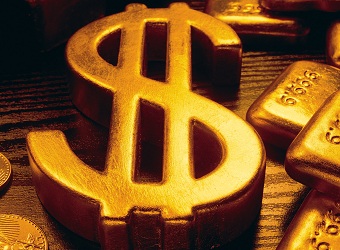Spot gold was down 0.1 percent at $1,262.50 an ounce by 0053 GMT. It hit its lowest since Oct. 6 at $1,260.71 on Tuesday.
U.S. gold futures were 0.1 percent lower at $1,265.30.
The dollar index, which measures the greenback against a basket of six major currencies, was steady at 93.592.
The dollar was up about 0.2 percent at 112.46 yen.
U.S. Senate Republicans agreed to talks with the House of Representatives on sweeping tax legislation on Wednesday, amid early signs that lawmakers could bridge their differences and agree on a final bill ahead of a self-imposed Dec. 22 deadline.
U.S. unit labor costs were much weaker than initially thought, declining both in the second and third quarters of this year, pointing to very benign inflation pressures in the near term even as the labor market is close to full employment.
The Bank of Canada held interest rates steady on Wednesday, as expected, and took a cautious tone even as it said more rate hikes are likely in store amid diminishing slack in the labor market and signs of inflation pressures.
Britain has not conducted formal sector-by-sector analyses of the impact that leaving the European Union will have on the economy, Brexit minister David Davis said on Wednesday, arguing they were not necessary yet.
The European Commission proposed on Wednesday ideas for deeper euro zone integration in an effort to help unite the broader European Union, as euroskeptic sentiment grows across the EU and Britain prepares to leave the EU in 2019.
Global holdings of gold-backed exchange-traded funds (ETF) rose by 9.1 tonnes to 2,357 tonnes in November, with the net inflows coming entirely from Europe as the U.S. dollar fell, the World Gold Council said on Wednesday.
India’s gold imports in November nearly halved from a year ago as a rise in the price of the yellow metal curbed retail buying for weddings, industry officials and analysts said on Wednesday. Source: Reuters
Source: Reuters



